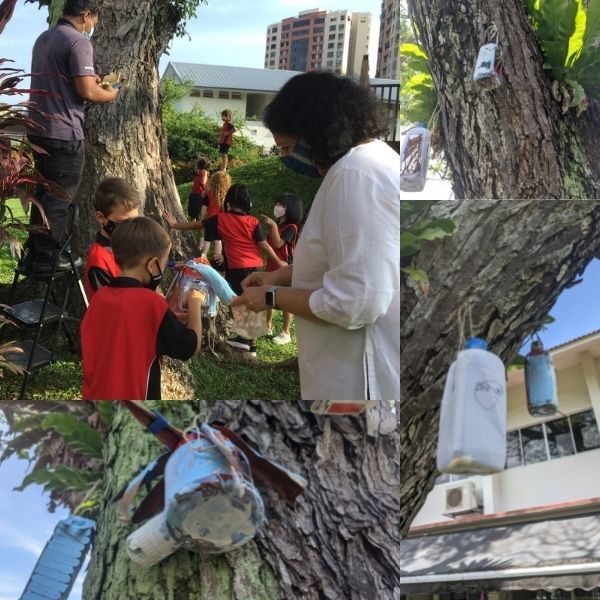Team project: how to make a bird feeder
As part of their unit on ‘How the world works’, TK SK students explored different kinds of materials, their uses and properties. After sorting materials into different categories, the students were tasked to come up with a project that would demonstrate what they had learned.
Making connections to the real world
After they spotted birds like parrots, oriole and hornbills in the Outdoor Discovery Centre, the students decided to create a bird feeder. They had a brainstorming session and decided to bring recycled materials such as shoe boxes, milk/juice bottles, cartons and plastic jars to create them.
The students also consulted STEAM/Makerspace teacher Ben Cooperman, who advised them on the most suitable materials to use. They learned that milk cartons are waterproof because they are coated with a plastic layer, which makes them an ideal material to build a bird feeder.
Building in progress
Before the students started building their bird feeders, they first researched and drew up a plan. They did this in groups of two or three. The level of excitement in the STEAM classroom was high as the students measured, cut up popsicle sticks and twigs, used glue, waterproof tape, and even accessorised their bird feeders with some decorations and paint.
After they finished building the bird feeders, it was time to hang them up in the trees. The students chose a tree behind their classroom and with the help of Shahalin from the TK maintenance team, they hung the bird feeders and filled them with grains, seeds and fruits.
Now all they have to do is wait for the birds to drop by!

Approaches to learning
Naturally, this is more than just a project to make bird feeders. SK students were able to apply the knowledge gained during the unit and participate in collaborative learning. As SK student Malakai puts it, “I wouldn’t have been able to make such a good bird feeder if I didn’t work with my friend Callum!”